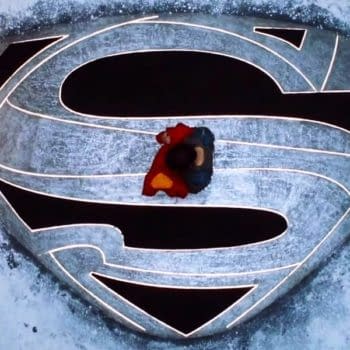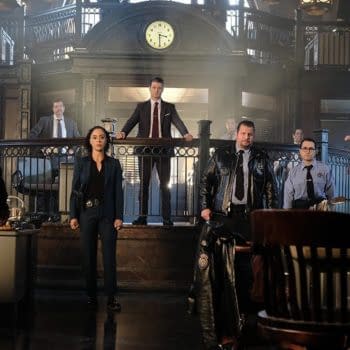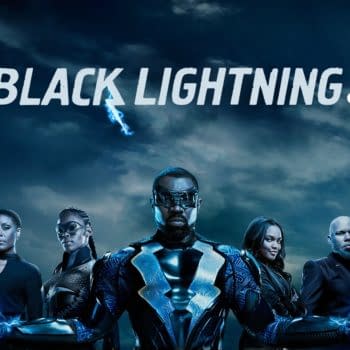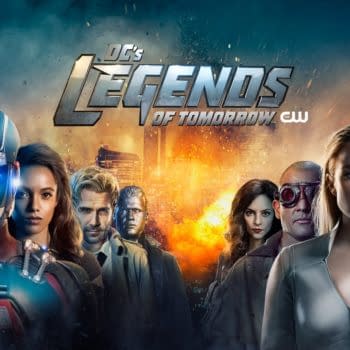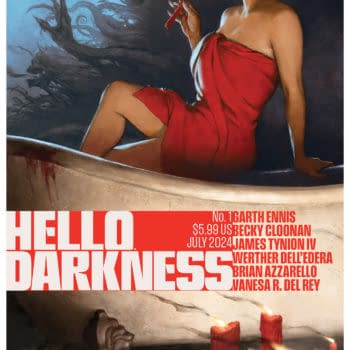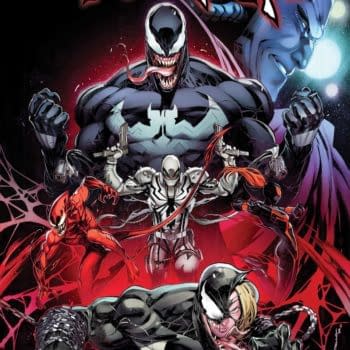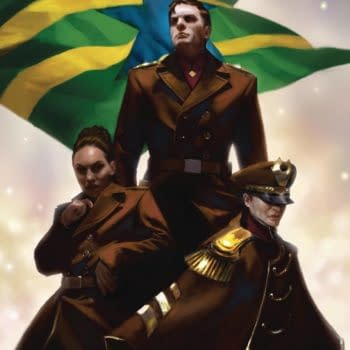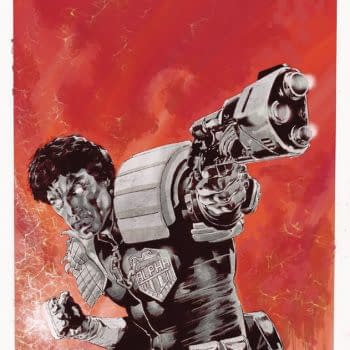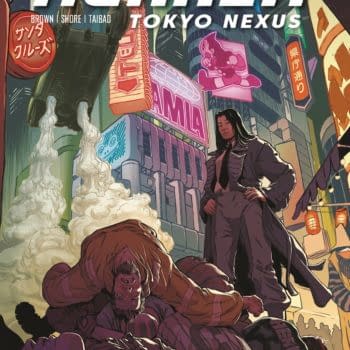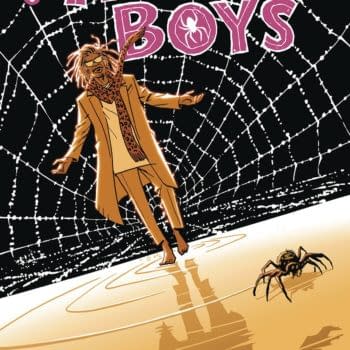Posted in: Comics | Tagged: Batman, Clay Adams, Comics, entertainment, Fried, HRL, jurassic park, Red Xmas: Holy Crap
The Simple Story Structure You've Never Heard Of, But Should Master
Clay Adams writes for Bleeding Cool:
Discussions about story structure tend to run from the head-smackingly simple ("A story needs three acts!") to the mind-bogglingly complex ("Your story needs 16 specific beats comprising 21 critical components taken from the eight basic plots, made up of the 36 dramatic situations.")
It's enough to make a young writer scream.
So, in order to discuss story structure, we need a framework that's just right. And if Goldilocks studied books on writing, she would surely live happily ever after with John Yorke's brilliant Into The Woods: A Five-Act Journey Into Story.
Mr. Yorke is a British television writer and former head of BBC Drama Production, so he knows his stuff. And in his highly readable analysis, he argues that three-act structure is a myth. Drama, he says, has always been written in five acts — which I have named below using buzzwords from various writing "gurus":
Act One: Dude with a Problem
Act Two: Fun and Games
Act Three: Cave of Knowledge
Act Four: Nightmare
Act Five: Final Confrontation + Celebration
Act One is self-explanatory: we meet a dude (or lady) with a problem. This is our setup.
In Act Two, Fun & Games, our hero embarks on an adventure and things seem to go well at first. This is what screenwriting guru Blake Snyder calls, "The Promise of the Premise." (Think Batman in costume, kicking butt — it's what you paid money to see, right?)
In the double-length Act Three, our hero enters the Cave of Knowledge, where they find the magic elixir that will lead them to success — and usually discovers something important about themselves. It's called the Cave of Knowledge because in many, many, many stories it's an actual cave. Seriously — start looking for the cave now. You will see it everywhere. Just watched Kubo and the Two Strings last night. Act 3 location: cave. Raiders of the Lost Ark's Act 3 location: cave. And so on and so forth. But it can also be a metaphorical "Belly of the Beast" (like the Death Star/trash compactor in Star Wars). It is also here that the story hits a tipping point that sends it into…
Act Four, Nightmare. If everything went well in Act Two, this is where things go wrong fast. In fact, it gets so bad, the hero hits their worst point at about the 75% mark. It looks like all is lost, but…
The hero picks him or herself up in Act Five and uses the secret knowledge to defeat the villain (or not).
This is a gross over-simplification of a fascinating, value-packed book (seriously, read it yourself), but for our purposes, it's a nice, simple framework through which we can look at stories. It works for movies, TV shows, entire seasons of TV shows, and, of course, comics.
In fact, it's the story structure we use to write everything at FRIED Comics.
Our latest book is RED XMAS: O HOLY CRAP!, a 56-page, perfect bound yuletide special for holiday haters. It features beautiful art by Fabio Ramacci and Dominike "Domo" Stanton and the basic story goes something like this:
"When Mrs. Claus dies in a tragic toy accident, Santa sets out to make all those little brats pay. Now, a Santa-skeptic FBI agent must team up with her wannabe-elf ex-husband to save their son — and Christmas!"
Read the book, and you'll notice we hit all the beats I talked about earlier.
And if you're a process junkie like me, we're offering up access to our FRIED Comics Producers Club. This is where I regularly post my analyses of several stories looking through the five-act lens.
So far, we've examined Jurassic Park (and compared the differences in structure between the novel and the movie); the animated movie Trolls; and, finally, Frank Miller and David Mazzucchelli's classic Batman: Year One — which we examined on both an issue-by-issue basis, and then the entire story as a whole.
We also post comic production tips, like lettering and coloring critiques.
It's already a great value, but we're offering Bleeding Cool readers an exclusive 20% discount. Simply add $12 to any pledge level of our campaign, and then leave a comment that says "Bleeding Cool" so we can keep track of your membership and discount.
And in case you want to read more before deciding, I'm offering up my free analysis of Batman: Year One in order to give you more of a peek into what we do.
It's a bit of a deep dive, so I couldn't post it here. Instead, go to friedcomics.com/redxmas and look for the link under the "Producer's Club" heading.
And while you're there, check out our book!






